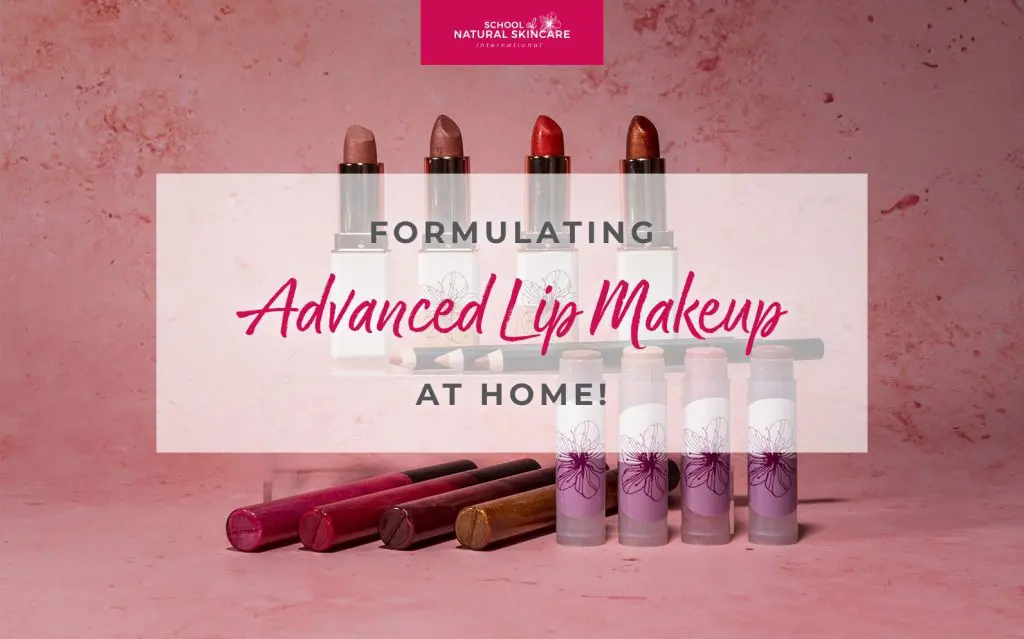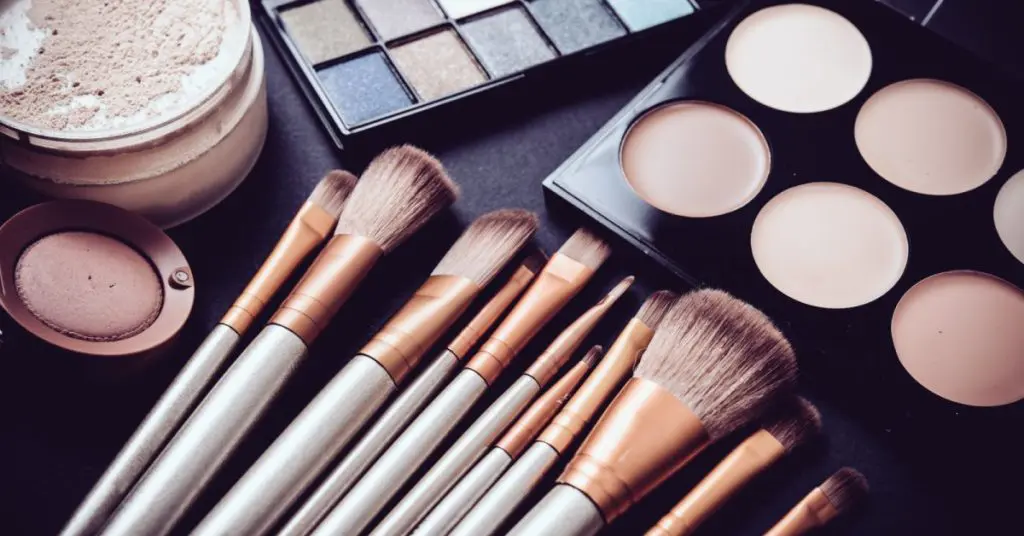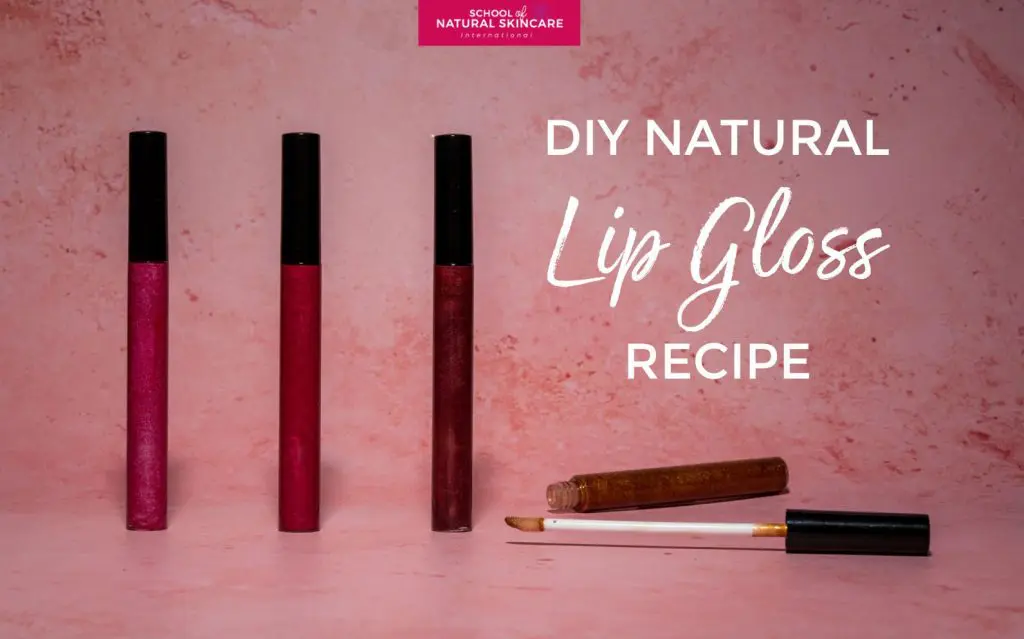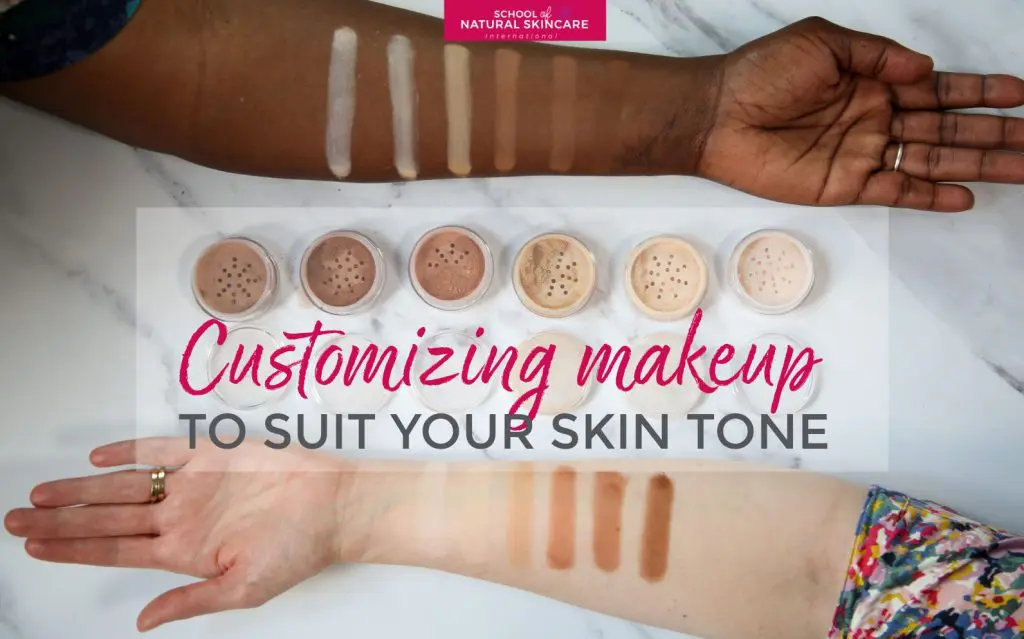Commercial lip products often contain ingredients that those of us who prefer natural and organic cosmetics would rather avoid. The good news is that it is possible to formulate lipsticks, lip glosses, tinted lip balms and even lip liner pencils at home to professional standards.
You can create professional standard lipstick, lip gloss, and other forms of natural lip makeup at home using natural or organic ingredients and to natural and organic standards (such as COSMOS).
Rather than petroleum, mineral oil and silicones, natural lip products use nourishing plant oils, butters and waxes to moisturize and protect the lips, plus pigments and micas for color and shimmer.
Warning: Please don’t follow online tutorials for using colored wax crayons to make lipstick. There are a ton of them online, but it’s not a smart or safe idea!
In this article, we’ll take a closer look at:
- Why you should avoid mineral oil in your homemade lipsticks.
- The types of natural cosmetic lip products you can formulate.
- Creating your lip product color.
- Add some fragrance to your natural lip product.
We’ve created an entire module on Advanced Lip Products within our Diploma in Formulating Natural Makeup and Advanced Color Cosmetics if you want to know more. It covers everything you need to know about formulating homemade lip balm, natural lipstick, lip glosses, tinted lip balm, and lip liner pencils.
Why you should avoid mineral oil in your lipsticks
Mineral oils are particularly a problem in lipsticks. Mineral oils are a mixture of complex hydrocarbons comprised of mineral oil saturated hydrocarbons (MOSH) and mineral oil aromatic hydrocarbons (MOAH). It has been proven that if MOSH are absorbed into the body, they are stored in various organs and may cause damage to the liver and lymph nodes. MOAH are potentially carcinogenic and are prohibited in food substances by the European Food Safety Authority.
Cosmetic-grade mineral oils are supposed to be highly purified and have all of the MOAH removed from them, so they only contain MOSH. Sadly, tests have shown that that’s not always the case. This issue is only problematic in lip care products because some of the product gets ingested through the mouth.
Mineral oils are not absorbed by the skin (Lorenzini et al., 2010)1. The other main issue with mineral oil is the impact that it has on the environment. This non-renewable oil has been found to have poor biodegradability, acting as an environmental hazard and a threat to aquatic ecosystems. In addition to this, mineral oil can block pores within the soil, reducing the air and water that the soil accesses, leading to degradation of soil and the surrounding plants (Nowak et al., 2019)2.
There are much better alternatives out there. Vegetable carrier oils are great emollients; they contain beneficial fatty acids, vitamins and antioxidants, plus they are completely safe to be used on the lips as well!
The 5 types of natural lip products you can formulate
Primarily, lip products are worn to add color to lips, but they can also contain nourishing ingredients, for example, beneficial oils and butters, to function as caring products. What natural cosmetic lip product you choose to make is up to you!
Tinted lip balm
- Similar to regular lip balms, with a touch of color.
- Oils and butters provide nourishment and a glossy effect.
- Packaged in twist-up lip balm tubes, small lip balm jars or tins.
- Come in the form of anhydrous balms, made of emollients (oils, butters, esters) and lipid thickeners (waxes, fatty alcohols, etc).
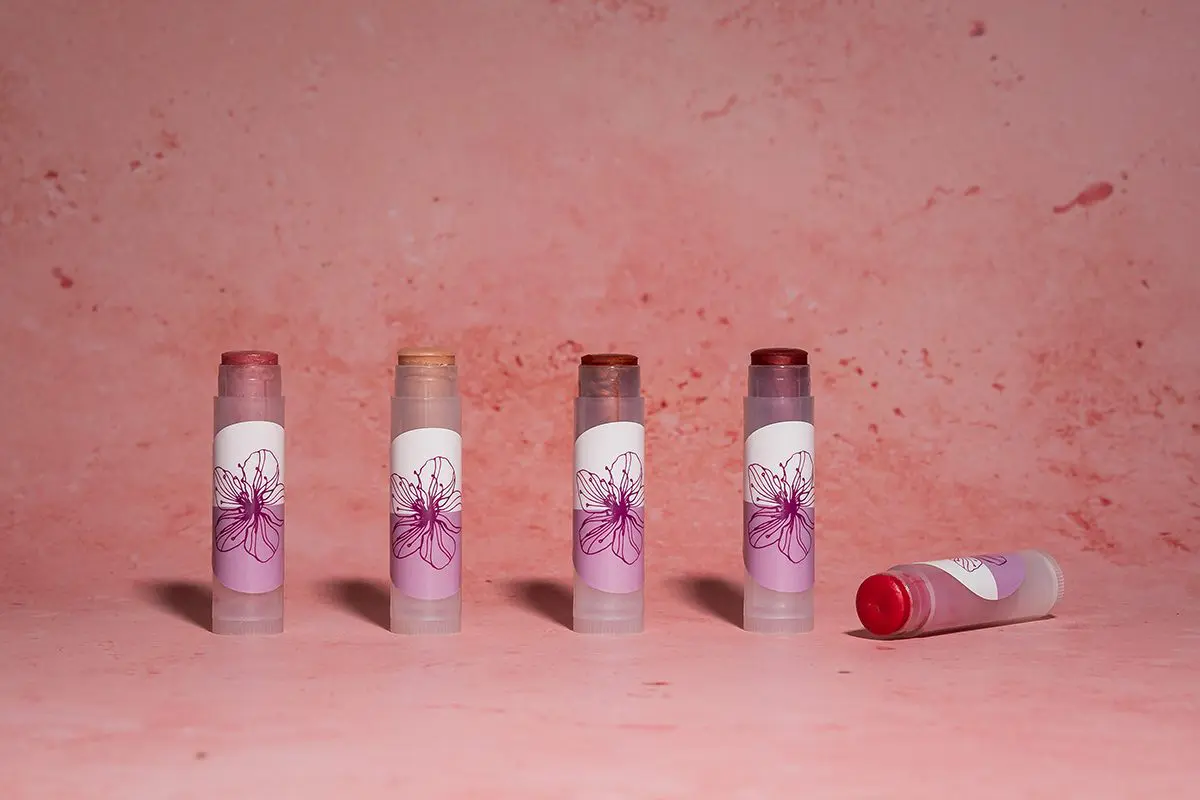
Lip gloss
- Used to add high-shine gloss to lips.
- Can be transparent or colored.
- Are anhydrous oily gels with or without glycerin.
Lipstick
- Adds strong color to the lips.
- Contains lip-nourishing oils and/or butters.
- Uses a special mold to make the bullet shape.
- Highly pigmented.
- Are anhydrous, containing emollients (oils, butters, esters) and lipid thickeners (waxes, fatty alcohols, etc).
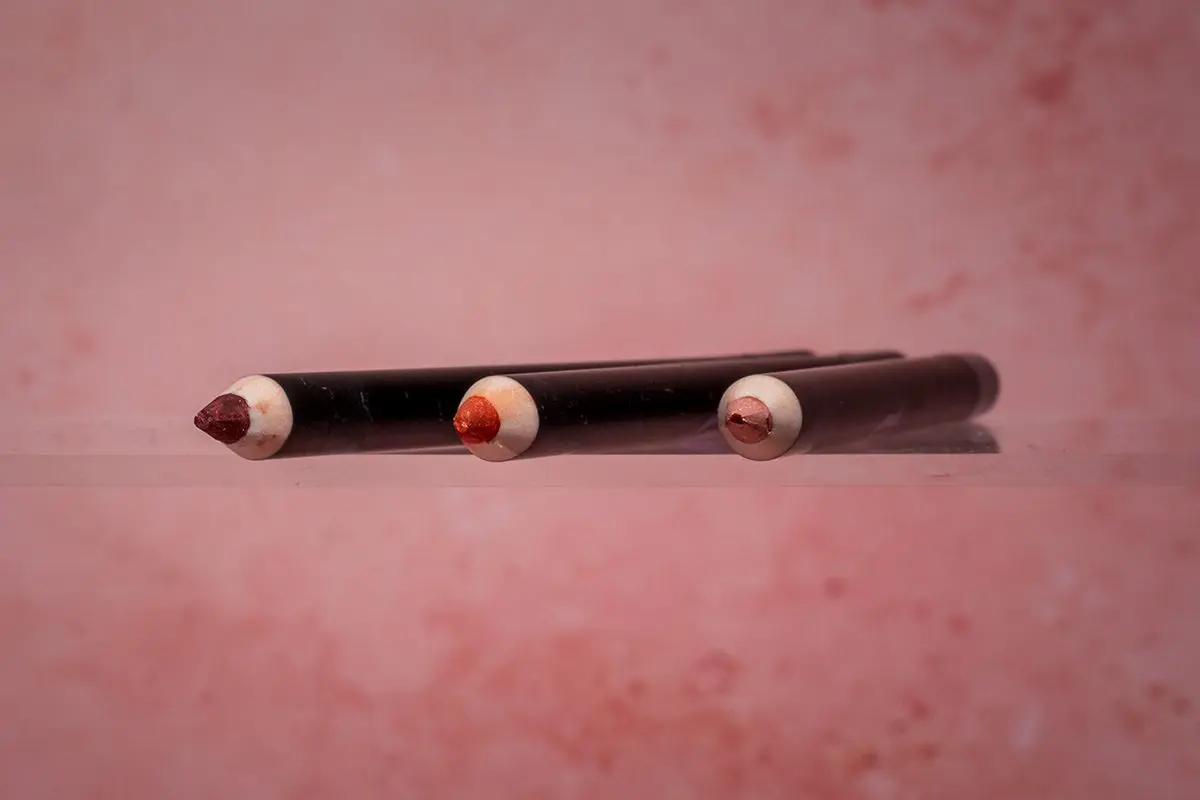
Lip liner
- Comes in the form of fine pencils or pencil-like twist-up containers.
- More pigmented than lipsticks.
- Are anhydrous, with a high wax content.
Lip crayon
- Somewhere in between lip balm and lipstick.
- Anhydrous and balm-like.
- Contains nourishing emollients and lipid thickeners.
- Highly pigmented.
Creating your lip product color!
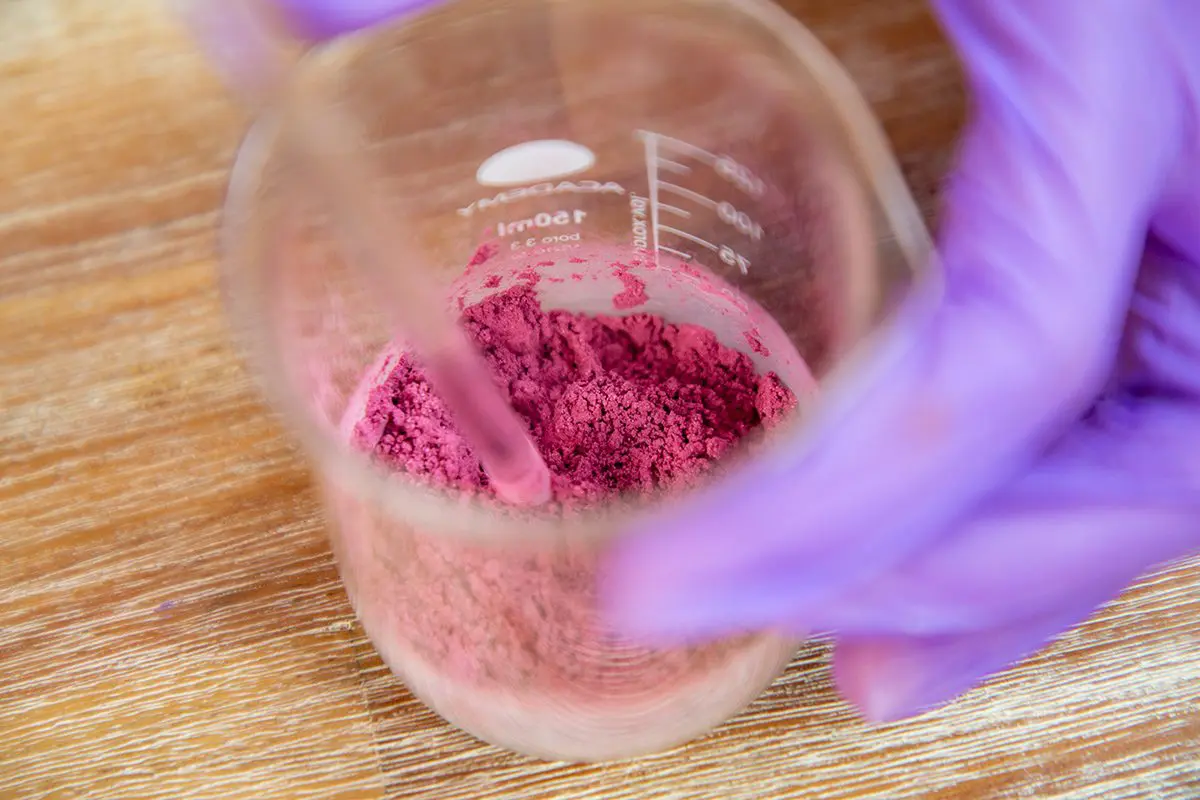
Pigments are the key ingredients that add color to color cosmetics, including homemade lip balms and other forms of natural lip makeup.
The type of colorant used in a product depends on the product itself – will it be water-based, oil-based, emulsion, or a dry powdered product? Other characteristics, such as pH and other ingredients used in a homemade lipstick or natural lip formula, can also affect the choice of colorants.
Most lip products are thick, oil-based products which can be colored using mineral pigments and/or colored micas.
Mineral pigments
Pigments used for cosmetic applications are nature identical. This means that instead of being derived from nature, they are created in a lab. Despite not being naturally derived, they are permitted in many natural/organic certifications such as COSMOS. Mineral pigments are very stable (they do not fade or change color) and they produce intense hues.
Colored micas
Colored micas are easy to work with, are available in many different colors and add a wonderful shimmer to color cosmetics. Mica itself is colorless to white, and so it is treated with other colorants, for example, mineral pigments, to achieve a shimmery colorant of several different hues.
When choosing colored micas, always check the INCI list to see which colorants have been used to give it color. Especially if you are formulating a product designed to have organic certifications, as only mineral pigments will be permitted, not synthetic organic pigments.
Part of the fun of formulating your own lip products is experimenting with pigments to create different shades. You can create your own pigment mixture to achieve your desired color and finish.
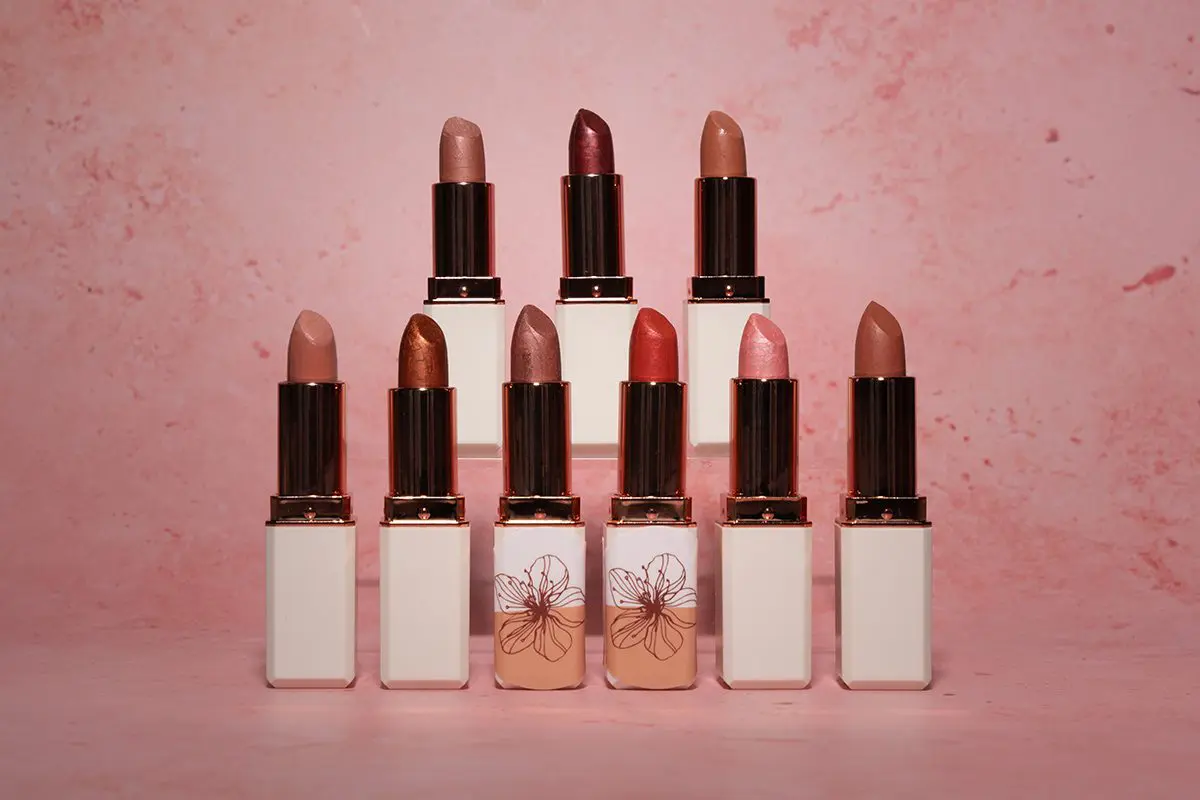
In Formulating Advanced Natural Color Cosmetics, Advanced Lip Products, we explore different ways to create the color you desire, using a mixture of micas and matte pigments, including five pigment mixtures we have already created that are suitable for any lip product featured in the module; from baby pink, to summer red!
Add some fragrance to your natural lip makeup products!
Color cosmetics also tend to contain fragrance ingredients to make them smell more appealing. This is especially true if the raw materials have strong, unpleasant scents.
You can use gentle essential oils in low amounts for a natural option, but always check with the supplier to make sure they are suitable for lip care use.
Want to know more and make your own natural advanced lip makeup?
In our module on Advanced Lip Products, we go into more detail about formulating your own colored cosmetics for lips, storage and shelf-life and we provide five colored lip product formulations for you to try at home!
Make a Tinted Lip Balm using colored mics of your choice, a Lip Gloss thickened with wax and a Lip Gloss with an oil-gelling agent.
Create a Lipstick by following our video demonstration and step-by-step photographic guide to filling a mold and assembling the lipstick. We’ll also show you how to make a Lip Liner Pencil too.
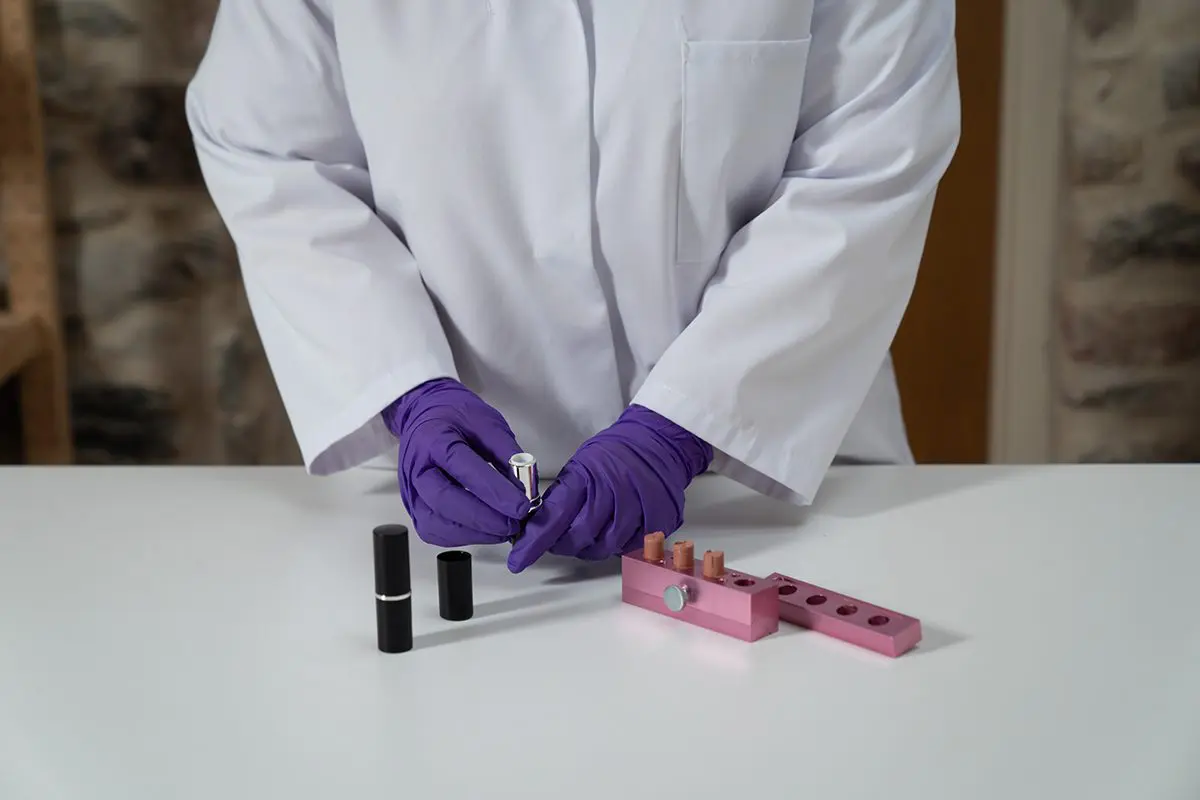
Use the extensive Product Development Briefs provided and create stunning lip products that can be as individual as you are!
If you’d like to enroll on the course or find out more, you can do that here: Diploma in Formulating Natural Makeup and Advanced Color Cosmetics.
If you are a member of our Natural Cosmetic Formulation Club then take a look at the course’s dashboard for more information on how to access this module and start your journey with Formulating Advanced Natural Color Cosmetics today!

- Lorenzini, R., Fiselier, K., Biedermann, M., Barbanera, M., Braschi, I., and Grob, K. (2010). ‘Saturated and Aromatic Mineral Oil Hydrocarbons from Paperboard Food Packaging: Estimation of Long-Term Migration from Contents in the Paperboard and Data on Boxes from the Market’. Food Additives & Contaminants: Part A, 27(12), 1765-1774.
- Nowak, P., Kucharski, K., and Kaminski, M. 2019. ‘Ecological and Health Effects of Lubricant Oils Emitted into the Environment’, International Journal of Environmental Research and Public Health, 16(16): 3002
